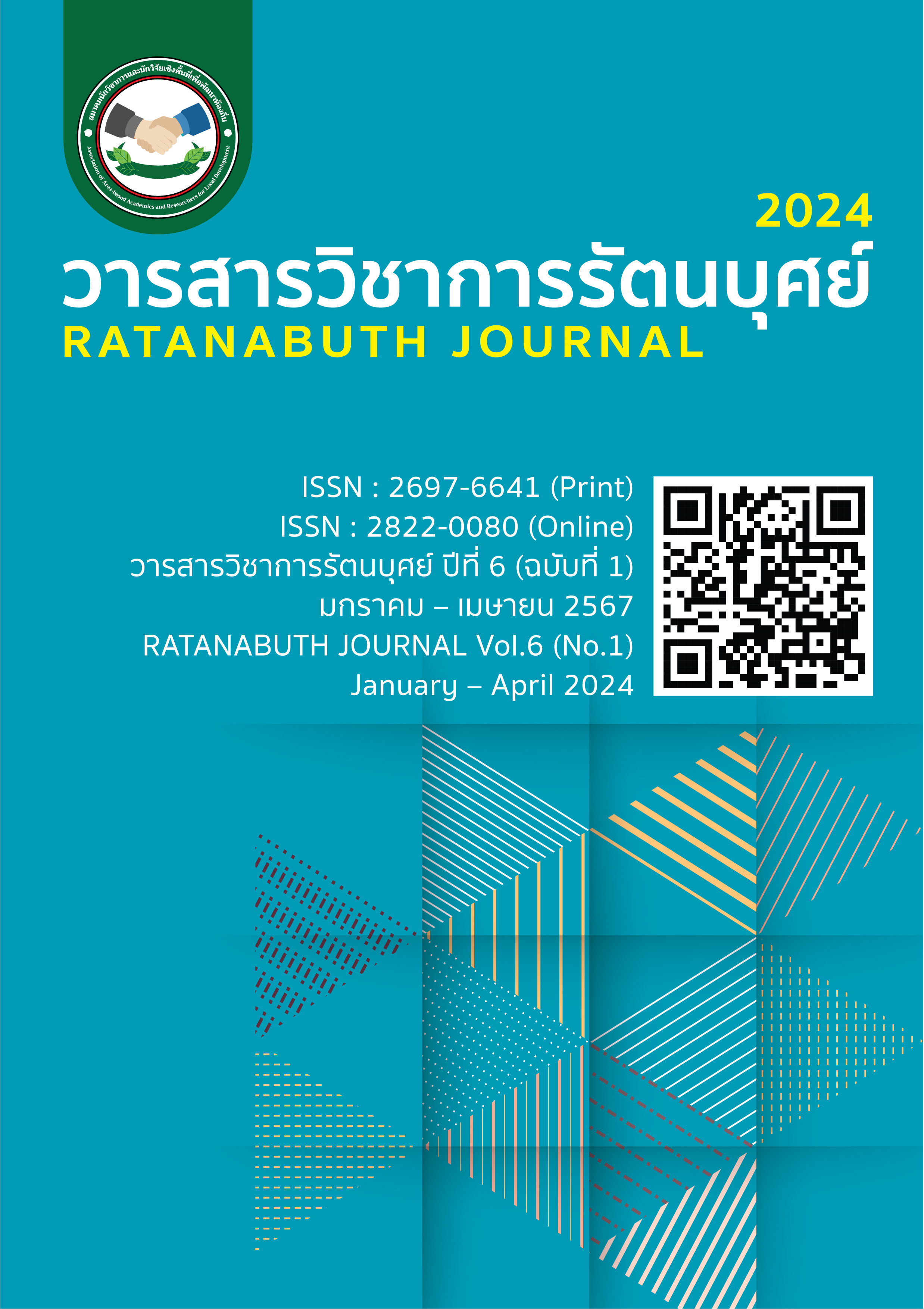การอนุรักษ์และการจัดการสถาปัตยกรรมไม้แบบดั้งเดิมอย่างยั่งยืนของสถาปัตยกรรมชนกลุ่มน้อยชาติพันธุ์ต้งในเขตปกครองตนเองซานเจียงต่ง กว่างซี สาธารณรัฐประชาชนจีน Conservation and Sustainable Management of Traditional Wooden Architecture of Dong Ethnic Minority Architecture in Sanjiang Dong Autonomous County, Guangxi, People's Republic of China
Main Article Content
บทคัดย่อ
เขตปกครองตนเองซานเจียงต่งในกว่างซี ประเทศจีนมีชื่อเสียงระดับโลกในด้านสถาปัตยกรรมไม้แบบดั้งเดิมของต้งอันเป็นเอกลักษณ์ โครงสร้างไม้แบบต้ง (Dong) เหล่านี้แสดงให้เห็นถึงประวัติศาสตร์อันยาวนานและประเพณีทางวัฒนธรรมของชาวต้ง (Dong) ด้วยงานฝีมืออันประณีต การออกแบบที่เป็นเอกลักษณ์ และความหมายแฝงทางวัฒนธรรมที่ลึกซึ้ง อย่างไรก็ตามด้วยความเร่งของกระบวนการปรับปรุงให้ทันสมัย โครงสร้างไม้แบบดั้งเดิมของชาวต้งกำลังเผชิญกับความท้าทายที่รุนแรงมากขึ้นเรื่อย ๆ บทความวิจัยนี้มีวัตถุประสงค์เพื่อศึกษาประวัติศาสตร์และวิวัฒนาการของงานสถาปัตยกรรมไม้แบบดั้งเดิมชนกลุ่มน้อยชาติพันธุ์ต้งในเขตปกครองตนเองซานเจียงต่ง มณฑลกว่างซี สาธารณรัฐประชาชนจีน เพื่อการอนุรักษ์และการจัดการที่มีประสิทธิผลของสถาปัตยกรรมไม้แบบดั้งเดิมของสถาปัตยกรรมชนกลุ่มน้อยต้ง เพื่อสร้างกลยุทธ์การจัดการที่สร้างสรรค์และยั่งยืนของสถาปัตยกรรมไม้แบบดั้งเดิมของสถาปัตยกรรมชนกลุ่มน้อยต้ง (Dong) ในเขตปกครองตนเองซานเจียงต่ง (Sanjiang Dong) กว่างซี สาธารณรัฐประชาชนจีน โดยศึกษาทบทวนวรรณกรรม การสังเกต การสอบถาม การสัมภาษณ์ และวิเคราะห์เพื่อหากลยุทธ์ในการกำหนดเป้าหมายแนวทางในการจัดการอย่างยั่งยืน ซึ่งส่งผลให้เข้าใจในความหมายแฝงลักษณะของวัฒนธรรมต้งในด้านสถาปัตยกรรมไม้แบบต้ง และมีมาตรการในการอนุรักษ์สืบทอดงานสถาปัตยกรรมไม้ดั้งเดิมแบบต้ง ซึ่งเป็นกลยุทธ์แนวทางในการพัฒนาที่ยั่งยืนสืบไป
Article Details

อนุญาตภายใต้เงื่อนไข Creative Commons Attribution-NonCommercial-NoDerivatives 4.0 International License.
เอกสารอ้างอิง
Cai Ling, Deng Yi. (2010). Preliminary research on Dong architectural heritage and its protection and utilization. Hunan Social Sciences, (03), 198-200.
He Chengzhan, Liang Song, Liu Kai. (2017). Construction and research of digital platform for traditional Dong architecture in Guangxi. Journal of Guangxi University for Nationalities (Natural Science Edition), (02), 78-81.
Li Sheng'an, Tang Guifang, Chen Yanxia. (2018). Investigation and research on the inheritance and protection of Dong village characteristic dwellings in Chengyang Bridge, Sanjiang, Liuzhou, Guangxi. Journal of Wuzhou University, (06), 62-66.
Qiao Rongrong. (2015). Analysis on the architectural aesthetic structure design of traditional Dong villages. Art Grand View, (04), 114.
Wang Xiaoxue. (2014). Research on the inheritance of architectural culture of Dong people in Guangxi. Oriental Corporate Culture, (16), 84-85
Wei Jie, Luo Youxian. (2009). Sustainable development evaluation and management regulation of historical and cultural towns and villages based on DPSIR conceptual framework. China Famous Cities, (01), 41-45
Wu Peng. (2020). Comparative study on the architectural characteristics of tower-style and pavilion-style drum towers of Dong people in Sanjiang Dong Autonomous County (Master's thesis, Guilin University of Technology). https://kns.cnki.net/ KCMS/detail/detail.aspx? dbname=CMFD202101&filename=1020389410.nh
Ye Yanbing, Tang Liuli & Zhang Qi. (2012). Thoughts on the protection and development of Dong village buildings in Guangxi. Sichuan Architectural Science Research, (04),101-103.
Zhang Jijun, Xu Liang. (2010). Protection and tourism development and utilization of Dutong original ecological Dong village. Market Forum, (11), 83-84.
Zhao Chengyu. (2020). Research on the architectural culture, inheritance and protection of Dong people in Guizhou. Colorful Guizhou Culture Journal, (00), 219-233.


